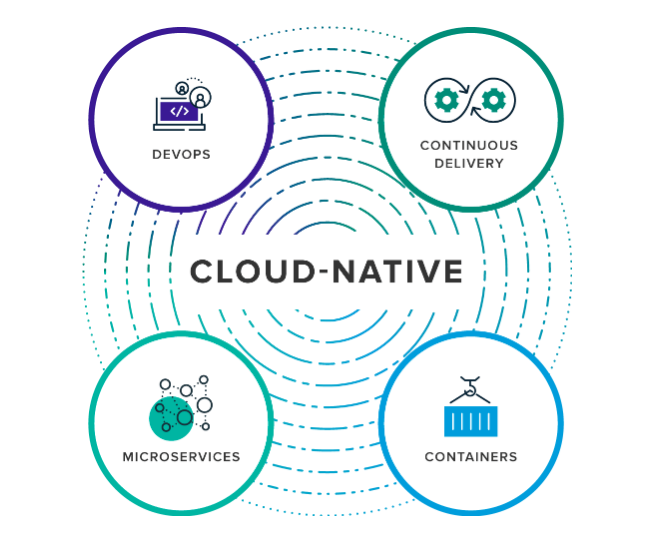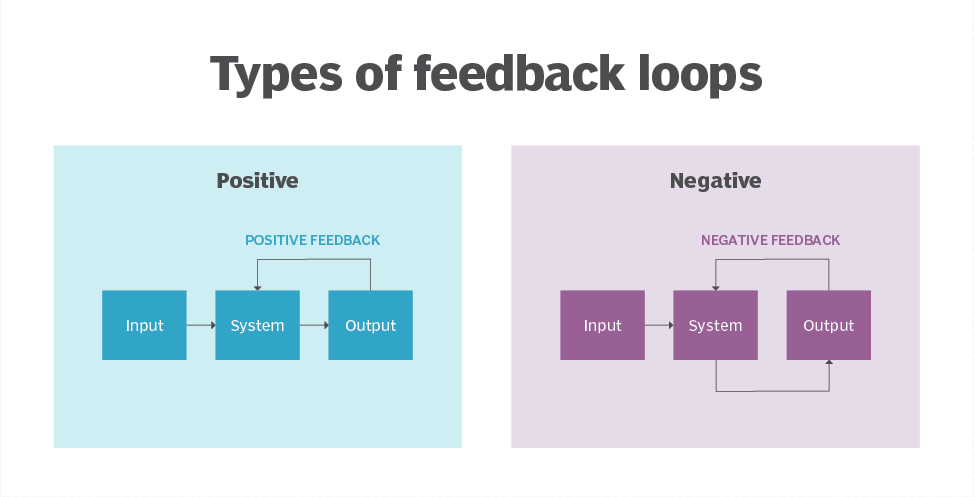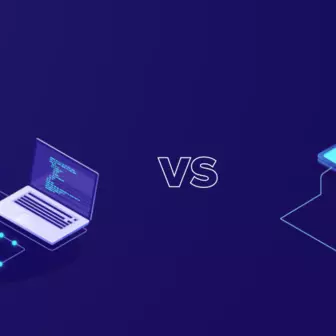We have often talked about how DevOps brought about changes at the operational and functional level of software development. However, the emergence of cloud computing and now cloud-native has led to another marginal shift in the processes of development and deployment. With data playing a significant role in the mechanism of operations, the feedback loop is something to watch out for.
Enterprises are now seeking solutions for successfully approaching cloud-native and gauging the impact it would reflect on their business objectives.
In this blog, we will unleash how the amalgamation of cloud-native and DevOps facilitate a faster feedback loop for your ecosystem.

Featuring Cloud Native
It seems like yesterday when we were introduced to the cloud age for applications that run as services. In no time, technology took a bigger leap with cloud-native.
Being a new buzzword, there’s a lot of confusion on the intrinsic functionality of the cloud-native systems. However, leveraging the modern practices of technology, organizations can now align their ultimate goals and expectations with cloud-native. They can optimize the applications and the provided environments to expedite the transformational changes and digital outcomes.
These features of a cloud-native application help them afloat by:
- Fostering better relationships with customers and enhancing their experience
- Maximizing the efficiency of operations and thus reducing costs
- Risks of failure reduce and the ecosystem becomes resilient
- Workload changes the dynamics of the infrastructure and adds value to the revenue streams
Three Core Capabilities of Cloud Native
For an organization to master the life-cycle of cloud-native, there are three core capabilities that they should be successful in implementing:
Visibility
The plunge of adopting new technologies often reflect in the weak monitoring processes across complex environments. In order to understand the tools and their dependencies, teams should be correlating to pool visible data and thus channelize it in a systematic order. Better visibility can also break the traditional silos and hasten the feedback loops.
Experimentation
New tools trigger the experimenting stage where the developers have to get used to the environment along the way. In the initial stage, finding the source of loopholes can become a task which in turn seems to increase the difficulty level. Crossing this stage and strengthening the understanding of the infrastructure becomes important here.
Optimization
Adopting cloud-native across distributed stacks of an organization can be a time-consuming process. Scaling the success of the new environment along with maintaining the sustainability of the business at an optimized cost can be challenging too.
Once crossing these core capabilities, the cloud-native grants you:
- The competence of continuous transformation
- The agility to perform in complex environments
- The potential of scaling and sustaining demanding businesses
Cloud-Native + DevOps
The interdependency between DevOps practices and the cloud-native architectures is completely a new area to explore.
Cloud-native technologies including microservices, serverless and containers are a blooming space to be. As multi-cloud environments are thoroughly managed by CI/CD pipelines, they are clinging on the DevOps culture. Thus, these patterns in the emerging spheres build a new ecosystem for supporting tools and services in return.
Cloud-Native DevOps is itself a cultural shift that holds a potential of enabling teams to build, test and deploy software with agility and scalability.
A correlated and curated data pumps the fuel for experimentation which enables a faster adoption, strengthen the culture of an organization, targets an air-tight alignment of business goals, and stirs a trend of innovations driven purely by insights.
However, you should look out for challenges like data overload for developers, hiccups in communication among the teams, and lack of sources to channelize the data in a performative manner. In due time, data creates a common language across divisions and becomes the center point of growth.
What are Feedback Loops?
With a mountain of data being generated in the cloud-native, it becomes humanly impossible to analyze that sheer volume and contextualize it in a meaningful manner.
Thus enter feedback loops, where the output is converted into an input for future endeavors, i.e., operations. For instance, the insights of the data that is accumulated from one set of operations are then utilized to churn out another set of data in a more directed manner. With cloud-native, the feedback loop has shrunk from years or months to hours and minutes.
This has also reduced the time required to generate solutions for fixing bugs and has changed the way modern software design development functions today.
When software is deployed, the feedback is sent across via queries, actions, locations, sensors, and devices. These statistics become guidance to create more valuable opportunities to serve the customers. The act of collective data sharing makes your organization a data-driven business that grows with its own data scientists.

Embracing Improvement Metrics
From tightening the feedback loops to monitoring the data, there are certain metrics for the improvements to be dwelled upon.
A Stable Platform
The strengthening of DevOps practices is directly proportionate to the stability gained. A system thrives on a stable functioning mechanism. In order to reach that desired stage of stability, the two metrics, namely, time to repair (MTTR) and change failure rate are responsible and should be kept in check. There are other factors like, flaky network or unreliable code that can shake the environment too. Alerts that can be activated and measures to fix the issues can be strategized in advance to tackle such cases.
Secondly, making sure that the CI/CD pipelines have a reliable path of production and validating the production readiness can also strengthen the stability grounds for your deployment.
Duration and Frequency
When the cloud-native starts deploying software, the speed and efficiency of the platform in responding to the customers is an important parameter to be taken into account. Time estimations like deployment frequency, the lead time for the change, and the time taken by the code to commit to the production run become crucial.
To begin with, organizations can achieve this by providing easy access to the libraries and services that can help developers automate their build and test process. In continuation of this, visible end-to-end automation pipeline of the production cycle allows the code to work better too.
Access
The availability of the application and to withhold various processes is a new measure and a base of all capabilities.
The valuable insights from each production when available should be utilized for improving the customer experience.
However, the applications should be ready to handle failure at levels like availability zone, VM, and process level. The disruptions at peak traffic sights should be maintained to a minimum with quantifiers like monitoring and visibility. This increases the availability and access of the application in turn.
Securing the Feedback Loop
With the feedback loop getting shorter and development cycles getting faster, the ability to deliver has averaged to about thousands of times a day. However, numbers are not the only parameter to judge the outcomes. Amplifying the feedback loop in a way that creates an end-to-end DevOps team is what delivers a progressive result.
Taking a peek at how Mobius Framework uses measurements to provide insight, the outcomes enable the DevOps teams to deliver desired business goals.
The key is to generate a substantial amount of data that can be put across the expertise of the DevOps and thus distributed among environments.
What’s your take on cloud-native DevOps? Share your views on our social networks: Facebook, LinkedIn, and Twitter.
Subscribe
Related Blogs
Serverless vs Managed Services: Which One to Choose

When you decide to build an application in the cloud, you need to consider several factors. One of the most important…

Over the past few years, the cloud industry has gone through an extreme change with the transformation of serverless…
Putting The Serverless Trend Under a Microscope

Flexible. Scalable. Economical. These terms essentially sum up the advantages of serverless computing, an architecture that…




